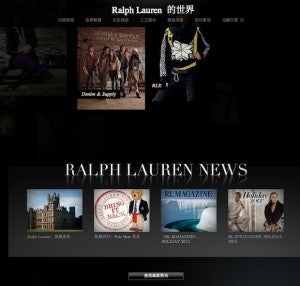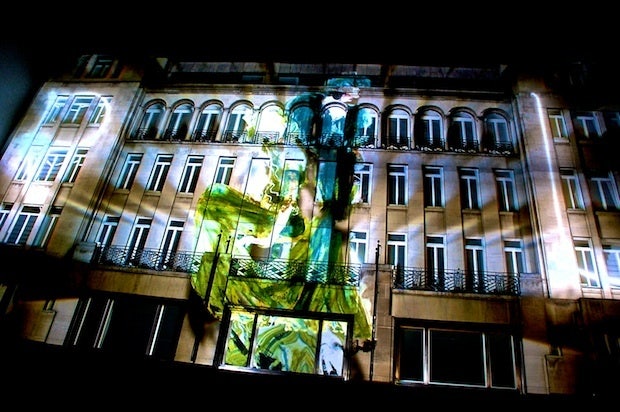Brand Expected To Launch E-Commerce In China This Year#

Plagued by several marketing missteps, damaged by rampant counterfeits, saddled with a less-than-ideal retail partner for two decades, since 2010 Ralph Lauren has been retooling its China strategy to rehabilitate its brand image and take advantage of the country's fast-growing apparel market.
Like fellow American brands Coach and Michael Kors, which enjoy strong sales among China's middle class, Ralph Lauren is hoping to situate itself firmly in China's mid-range luxury segment via a protracted brick-and-mortar rollout aimed at raising brand awareness.
As Ralph Lauren chief executive, Roger Farah, recently put it, the brand sees China in its "infancy," and hopes its ongoing effort will lay the foundation for long-term success. A key part of Ralph Lauren's renewed China strategy is supplying Chinese consumers with the company's full "pyramid of brands" -- the Collection, Blue Label, Purple Label, Denim & Supply, Polo, and children's lines -- so shoppers can start at one entry point and work their way up to the most expensive, exclusive lines.
This "trade-up" model is one employed by several multi-brand retailers in China, which often introduce shoppers to brands via diffusion lines.
"Given that China will be dominated by direct-to-consumer, whether brick-and-mortar or e-commerce, we will attempt over time to replicate the pyramid of products from the most elevated, most fashionable, most expensive straight through the hierarchy with a similar profile of real estate."
To this end, on the brick-and-mortar side, Ralph Lauren has announced plans to open 11 China locations in the current fiscal year and roughly 20 next year. In all, the company is expected to open around 60 locations in the Greater China region by 2015, focusing first on Beijing, Shanghai and Hong Kong. Last month, Farah told investors that Ralph Lauren would also increase its Asian e-commerce efforts this year. Said Farah, "We continue to invest in this expanding online reach, particularly in Asia. Korea will be launched later this year, followed by China."

Efforts within China are only one part of a two-pronged strategy to raise Ralph Lauren's stature among Chinese consumers. Last summer, the company hinted that it would start making more aggressive attempts to tap the spending of Chinese tourists in Europe, where this group is among the fastest-growing and most free-spending tourist segments.
With Europe still plagued by a sluggish luxury spending environment, Ralph Lauren hopes to increase the proportion of sales in Europe to Chinese tourists in line with what other premium brands have seen in recent years. So far, Ralph Lauren has been successful in attracting Chinese shoppers -- currently, this group accounts for nearly one-third of category sales in Europe, and around 15 percent in the US. As recently as last May, Chinese tourists only made up around two percent of Ralph Lauren’s European sales.
Though the company is headed in the right direction, there's plenty of work to be done if Ralph Lauren is going to position itself for long-term success in mainland China. As the Chinese-language news site JRJ Finance noted in 2011, Ralph Lauren’s China efforts have, over the past several years, been complicated by issues often beyond the brand’s control, among them ham-handed marketing and packaging by local brand agents:
Ralph Lauren’s three major product lines in China are his Purple Label, Black Label and Blue Label, and each of them occupies a different market segment...However, each of these product lines has simply been mixed together by Ralph Lauren’s local brand agents, with pricing being chaotic and irrational.
As more low-end items were sold with other higher-end lines, Chinese consumers became confused, a development that has further damaged Ralph Lauren’s brand image.
At the same time, the Chinese market of 2013 and Chinese market of 2011 are quite different. Over the past several years, "affordable luxury" brands -- many of which happen to be American -- have done increasingly well, particularly when they've managed to adroitly leverage Chinese social media platforms and attract younger consumers. Ralph Lauren's physical expansion efforts, wooing of Chinese tourists in Europe and the US, and eventual e-commerce strategies are big parts of the puzzle, but the company will have to master the ever-changing world of Chinese digital marketing to really improve its chances in the market.
